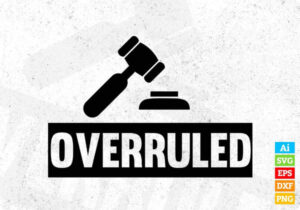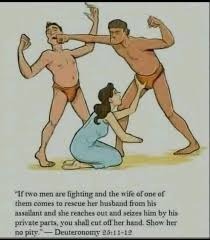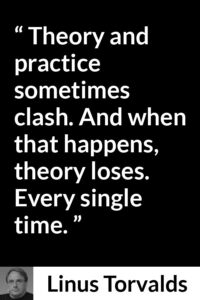Ki Saytzei 2025: Theory vs Reality, Part 2
by devadmin | September 4, 2025 8:44 pm
Raboyseyee and Ladies,
Theory vs Reality, Part 2:
As the Ois was reviewing the parsha earlier this week and thinking of a new topic to cover, this thought crossed his mind. Kimat every day we read about some judge in some circuit trying to stop the President’s agenda. He signs Executive Orders, and within weeks, some judge finds a way to stop him, at least temporarily. This week alone, there were several adverse rulings by these radical judges that will eventually end up at the Supreme Court, where hopefully they will mostly go the President’s way. All this got me thinking azoy: Is this a new concept? It’s not! So happens that our parsha is mamish the forerunner of laws put forth, yet somehow modified and overturned. Let’s take a look. The RBSO, in this week’s parsha (and in many others) laid down the law; He was, and is, all about Law & Order! Ober, our Sages of the Oral Tradition (the heylige Mishneh and Gemora) came along and decided that the RBSO didn’t really mean what He said. He said A but meant B. He said ‘an eye for an eye,’ but our Sages overruled and said that He meant money. The bottom line: It appears that the RBSO Himself was -so to speak- at least at times, overruled by our Sages. Shoin without getting too political, let’s hope the President fares better than did the RBSO with some of His Law & Order commandments, especially those concerning the death penalty. Now, before you accuse the heylige Ois of comparing the good President to the RBSO, that’s not the intention. Relax and exhale, you get the point. If not, too bad!

Welcome to Parshas Ki Say Tzey, which contains a whopping 74 different commandments, and with that great a number, it ranks as #1 in mitzva count! Many parshas have zero. Fasten your seatbelts because this week’s parsha, is mamish a rollercoaster. It’s got everything: war, marriage, divorce, rebellious teenagers, rape, adultery, incest, cross-dressing, yibum, chalitzah, inheritance fights, roof-railings, loans, kidnapping, and more. Zicher we don’t have the time or space to even list them all, let alone cover them. But know this: A number of them cover civil, family, ritual, war, and sexual laws.
Of course, you all remember that Ki Say Tzey is most famous for the perk given to soldiers. For many of you, this is all you remember from your four years in yeshiva high school. Why isn’t the Ois covering this unique law which allows the soldier in heat -on the battlefield- to shoot his gun, if you chap, at or into some beautiful shiksa he has laid eyes on? Davka because we have covered this topic several times over the past sixteen years the Ois has been posting reviews, and avada you should visit archives to review this important topic. They are more than eye popping reads. The bottom line: Were I running the State of Israel, instead of fighting with the Charedim about enlistment and quotas and instead of figuring out if the yeshiva bochur’s exemption qualifies because he is mamish shtyging in learning verses being busy on his phone doing business with his open Gemora or other sefer, I would do as follows: I would import a few thousand shiksas from Thailand or some other country where such activities are permitted -if not encouraged- and have them litter the battle field. Not just would the yeshiva bochurim enlist, so would many of their spiritual advisors. Sex sells! Free sex sells more. Veyter.

Did I just mention that our parsha contains many other sexual laws? The Ois did so davka because the parsha -among the great number of commandments mentioned above- also includes about 10–12 mitzvis that deal directly with sexual or intimate matters. Let’s quickly chazir them before we discuss what’s on the Ois’s mind this week as we begin to count down toward Rosh Hashono and Yom Kippur in earnest. It’s soon time to square up with the RBSO. Not to worry; He chaps us.
From the parsha shmorg containing 74 commandments, here are the specific sexually charged topics covered- each being a grave sin if violated, and where you can find more information:
- Yefas Toi’ar –the captive woman (21:10–14)
- Laws of inheritance /firstborn (tied to polygamy, 21:15–17)
- Forbidden marriage to father’s wife (22:30)
- Motzi Shem Ra (false accusation of adultery, 22:13–19)
- Execution of adulterous betrothed girl (22:20–21)
- Adultery with married woman (22:22)
- Betrothed virgin with another man (22:23–24)
- Rape of a betrothed virgin (22:25–27)
- Rape of an unmarried virgin (22:28–29)
- Divorce & remarriage restrictions (24:1–4)
- Levirate (yibum) marriage & chalitzah (25:5–10)
- A woman grabbing private parts (25:11–12)
- Cross-dressing (22:5, more “sexual morality” than relations).
And that’s what I call a list! The bottom line: 12 or 13 of the 74 commandments in our parsha involve a sexual/relationship of some sort. Let’s do the math: 13 of 74 = approximately 1 in 6 mitzvis. Actually, they are all aveyris (sins). And while all the above read and sound like titillating titles for graphic novels, they are to be found in the heylige Toirah which knew that man, left to his own devices, is -at least at times- but a behaymo. Sometimes worse.
Given the gravity of the sins and the punishments the RBSO threatens the perps with, we can imagine that the RBSO was not playing. Perpetrators were not sentenced to probation, boarding school, or community service. None were given chalk to write ‘I will not sleep with my father’s wife’ on the board 500 times. Instead, the heylige Toirah warns of very harsh consequences. These include stoning, burning, cutting off, lashes, and death served cold depending on the offense.
It so happens that a few months back, the Ois questioned another set of threatened punishments and wondered aloud if they ever took place. Were the people punished as threatened in the heylige Toirah? Does the heylige Toirah mamish prescribe the death penalty? Who executed the sentence? Welcome then to part 2 where we look at the various sins the RBSO spelled out mamish in black and white, along with the punishments He specifically delineated, and then ask the questions again: Were the punishments for these very severe sexual crimes ever meted out? Which ones? By whom? Why is there no mention of these cases actually happening?
Shoin, let us go through a few of the cases highlighted in our parsha and see what the heylige Toirah told us should happen and compare to what we know did happen when one violated. How many of the RBSO’s ‘set in stone punishments’ were actually implemented? Not in the order as they appear in our parsha, let’s get our hands dirty as does the woman we are about to read about.
Says the heylige Toirah (Devarim 25:11–12), azoy: “If two men fight, and the wife of one comes to save her husband and grabs the attacker by his private parts, you shall cut off her hand; do not show pity.” At face value, it reads like a literal amputation, ober Chazal -our Sages- of the heylige Gemora (Bava Kama 28a) interpret this very differently: They say “cut off her hand” means monetary compensation, not physical mutilation. How much? Ver veyst? Maybe a handful? We are not told. The bottom line: In Toirah parlance, “cutting off” is seemingly often a metaphor for paying damages. Was she cut off from using her credit cards? That could taka be worse! Says Rashi azoy: Beis Din (Rabbinical Court) fines her for embarrassing and harming the man; no physical harm is done to her. The bottom line: Who would want to mess with a woman who is adept at chapping a guy’s privates?

Ober what gave the heylige Gemora the right to contradict the RBSO’s words and instructions? The Toirah says to cut her hand off and the Gemora say it’s but a monetary fine? What’s pshat here? Who gave the Gamora and others license to pasken (decide with impunity) that the RBSO’s instructions are not literal? Were they -say it’s not so- watering down the heylige Toirah? Were they suggesting that the RBSO was but joking? Or worse: that He wrote punishments He never intended to carry out? What’s pshat here?
The answers seem to be azoy: Ershtens, the heylige Toirah never prescribes mutilation punishments for women (or men) in these types of cases. Even “an eye for an eye” is interpreted as monetary compensation, so says the Gemora (Bava Kama 84a). The bottom line: Chazal consistently read harsh-sounding instructions in a legal, but not literal way. What’s pshat? The Toirah’s language shocks the reader to convey how serious the act is (violating boundaries of modesty and dignity). A women grabbing a guy by his privates is mamish is busha (embarrassment) for the guy. Yet, the practical outcome is a fine. How much is the fine? Are we talking million or pennies on the dollar? Shoin, we shall address that a bit later, ober let’s move on to other sexual crimes in our parsha. It appears that the RBSO really chapped what man is capable of; shreklich. Oib azoy, that being the case, why taka did our Sages take it upon themselves to state with certitude that the RBSO was just kidding about capital punishment? Who gave them license to re-interpret the RBSO’s own words? Why did our Sages taka state that the prescribed capital punishments never took place?
Davka because evidentiary standards -set up by these very same Sages- were impossible to achieve. To convict and carry out capital punishment, two kosher witnesses (male, unrelated, observant) must see the act simultaneously. They must warn the sinners immediately beforehand, and the sinners must acknowledge the warning and persist. Of course, these conditions were never met. Only idiots would be doing their business in a public place in front of two kosher witnesses who warn them and then still continue with their lewdness. Of course, this almost never happened. It appears that our Sages didn’t want blood on their hands. Says the Mishneh (Makkos 1:10): “A Sanhedrin that executes once in 70 years is called destructive.” Rebbe Tarfon & R’ Akiva said: Had we been on the court, nobody would ever have been executed.
Oib azoy (if that is the case) what’s taka the purpose of the punishments the RBSO gives us in this week’s parsha? Was the purpose only educational? To dramatize values? To highlight purity, family life, honesty, self-control? To “scare” the community into behaving? Ver veyst?
It appears that in practice, punishment was symbolic; the Toirah set ideals, the rabbis legislated reality. The bottom line: Ki Seitzey taka reads like the most brutal parsha in the entire heylige Toirah — stoning brides, burning adulterers, chopping off hands, and more. The good news: Don’t let that stuff scare you; it seemingly never happened! That’s exactly the paradox, and it’s one of the most fascinating parts of Toirah She’bichsav (Written Law) versus Toirah she’ba’al peh (Oral Law). In reality, it’s the parsha that most clearly shows the gap between pshat and halacha: In theory, kimat every perp -male and female- was to be killed, ober, in real time halocho limyseh, the punishments scared the people, taught values, and set fences. Is the RBSO great or what?
Ober, all that being said, we can still ask azoy: Why would the RBSO convey all these laws is if He knew it would never be carried out? Why would He allow later Sages to come along and sort of overrule Him? What’s pshat with that? Here then a few answers proffered:
Some say that the RBSO -at times, deliberately uses shocking language (“kill him,” “stone her,” “cut off her hand”) to drive home the seriousness of protecting family life, fidelity, and boundaries. It’s not about filling cemeteries; it’s about filling minds with awe. Didn’t our yeshiva rebbes scare the crapola out of us back in the day? Indeed they did when they told us how when we get to shomayim, they would play a video of our lives. Yikes! Like this pshat?
Or, maybe it’s azoy: The punishments are real in principle, except that they take place in the afterlife. In Heaven’s court (beis din shel ma’alah), the spiritual consequences are real (e.g. korase = “cut off” from the Jewish soul-chain). Ober, down here on earth, the heylige Toirah made it virtually impossible to convict. What’s pshat?
- Beis Din shel matah (human court) → educational role.
- Beis Din shel ma’alah (Divine court) → actual justice.
Or, maybe this is pshat? Fear is deterrence. The mere existence of the punishment was meant to scare people straight. Even if the punishment was never carried out, the threat created a psychological fence. A teenager who knew that “sleeping with a married woman is a capital crime” might think twice before crossing the line. Thousands of years later, a documentary movie titled ‘Scared Straight’ came out. Does deterrence work? Not very well for most Yiddin; we all have chaps and workarounds.
Finally, there is this logic; one is rewarded for learning Toirah. Chazal say just that about the ben sorer u’moreh (rebellious son): “It never happened and never will—its whole purpose is for us to learn it and get reward” (Sanhedrin 71a). Meaning: sometimes the Toirah gives us a “case study law” that exists purely to be studied, not practiced.

All that being said, who gave our Sages the right to sort of tamper with the holy words of the RBSO? He said that certain violators were to be killed and yet our sages said not? Let us quickly examine that. One theory is that the RBSO Himself, in His heylige Toirah, gave certain individuals, or groups of them, to make changes to His words. Azoy? Let’s read His words. Says the heylige Toirah (Devorim 17:11), azoy:
“According to the law that they will teach you, do not turn right or left” (Devarim 17:11). It does appear that the RBSO Himself authorized our Sages to do this, “According to the law they will teach you… says the Sifri that even if they tell you right is left. In other words, the RBSO deliberately gave us a Toirah that requires human interpretation. Written Torah sets the ideals; Oral Toirah applies them with mercy and practicality. With those words, the RBSO seemingly hard-wired into the system that our Sages are the interpreters, and the pshat text is never self-executing. The system the RBSO gifted us is merciful; He entrusted our Sages to guide us so that Toirah law educates, elevates, and protects, rather than brutalizes. Though Ki Seitzei reads like the scariest parsha, it does contain more death penalties than anywhere else — yet in practice, it’s a parsha of education, fences, and values, not executions. Let’s get real: The RBSO knew that left as is, with His words being taken literally, that most of us would be long dead or deserving of death.

The bottom line: When Chazal say “death” it doesn’t usually mean physical death, and yet, they are not overturning the RBSO’s word — they are explaining His intent. Why write something if it means something else? Why not write the real rules? Why write it harshly then? Some say because Toirah is a teaching tool: The harsh word death wakes people up in a way that a “fine of 50 shekel” never would. No kidding!
The bottom line: we don’t know with certainty how or why our Sages made these changes; all answers proffered are but theories. And having said all that, let us go back and review the offense and the punishments and chap the difference between theory and reality.
The Wayward & Rebellious Son – Ben Sorer U’Moreh (21:18–21)
- Law: A son who steals meat and wine, gluttonously disobeys his parents, and shows signs of incorrigibility may be brought to Beis Din.
- Punishment: Death by stoning.
- Reality: Chazal (Sanhedrin 71a) say this never happened and never will; it exists only “so we should study and get reward.” You chap this? I don’t!
Illicit Marriages / Forbidden Relations (22:13–30)
- The False Accusation about a Bride (Motzi Shem Ra): A man claims his wife wasn’t a virgin on their wedding night.
- Punishment: If he’s lying → public flogging + 100 silver fine.
- If true → she is executed by stoning (only if she was betrothed, not fully married).
- Reality: Almost impossible to prove; rarely if ever carried out.
- Adultery with a Married Woman:
- Punishment: Both are executed.
- Reality: Proving this would require two kosher witnesses who warned them right before the act, and the couple had to acknowledge the warning and proceed anyway. Basically impossible. Finding one kosher witness is kimat impossible; two? Never!
- Rape of a Betrothed Woman:
- Punishment: the perp is executed; woman is blameless.
- Did this ever happen? Likely not due to same impossible evidentiary standard listed above.
- Rape of an Unmarried Woman:
- Punishment: Rapist must marry her (if she consents) and can never divorce. Also pays a fine.
- Reality: Rabbinic conditions and social pressure made this nearly unworkable in practice. Which normal girl would want to marry her rapist. Ok, let’s not mention Dina who was forcibly taken Shechem, but then wanted him; her story for the fall.
- Incest / Forbidden unions from our parsha (arayos): Several are reiterated here.
- Punishment: Often korase (Heavenly excision), sometimes death.
- Reality: Same evidentiary and kimat impossible -same as above.
Cross-Dressing (22:5)
- Law: A man may not wear women’s clothing, and a woman may not wear men’s.
- Punishment: Lashes (malkis).
- Reality: Rabbinically applied narrowly, mostly to prevent gender-mingling for immorality or idolatry.
The very final bottom lines: The heylige Toirah isn’t a penal code. It’s a book of ideals, values, and drama. It’s not about filling cemeteries. The RBSO wrote in fire; Chazal applied in flesh and blood. On paper, the heylige Toirah frightens; in practice, it refines. And that my dear readers, is good news for all of us. Exhale!
A gittin Shabbis –
The Heylige Oisvorfer Ruv
Yitz Grossman
Source URL: https://oisvorfer.com/ki-saytzei-2025-theory-vs-reality-part-2/